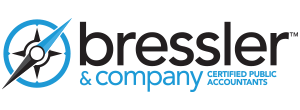Student Loan Forgiveness Programs – Are They Worth It?
Getting your student loans forgiven can take a huge weight off your shoulders if you’re struggling financially. However, the relief from student loan forgiveness programs may be short-lived if you end up with a big tax bill. Understanding the ins and outs of how the different forgiveness and repayment assistance programs work can help you decide if it’s really worth it in the long run.
There are three different forgiveness programs available if you took out federal student loans: Income-Based Repayment, Pay As You Earn and the Income-Contingent Plan.
Income-Based Forgiveness Programs
Under the Income-Based Repayment Plan, your payments are based on your income and family size and you never pay more than 15 percent of your discretionary income. After 25 years, anything you still owe on your student loans is automatically forgiven. The Pay As You Earn Plan also lets you make payments based on your income and the number of people in your household. The difference between this program and IBR is that you only have to 10 percent of your discretionary income and the repayment period lasts 20 years. After that, your leftover student loan balance is forgiven. The Income-Contingent Plan is also an option if you don’t qualify for IBR or Pay As You Earn. This plan requires you to pay 20 percent of your discretionary income towards your loans. After 25 years, anything you owe is written off.
Service-Based Loan Forgiveness
Service-based loan forgiveness programs are available to graduates working in certain career fields. The Public Service Loan Forgiveness program is designed for individuals who work in a service position in the public sector. The program applies to employees of local, state and federal government agencies as well as certain non-profit organizations. To qualify for forgiveness through this program, you have to make a minimum of 120 payments towards your loans. Once you’ve made the required number of payments, the rest of your loans are forgiven.
The Teacher Loan Forgiveness Program is available to teachers who are working in certain low-income schools. You have to be employed at an eligible school for five years and keep your loan payments current. As of 2013, you could get up to $17,500 in Subsidized or Unsubsidized Direct Loans or Federal Stafford Loans forgiven through the program. PLUS loans and loans that are in default aren’t eligible. If you took out Perkins loans, you can apply for cancellation after you’ve worked one full academic year in an eligible school.
If you’re able to qualify for loan forgiveness through one of these programs, you’re in luck. The IRS considers both programs to be an exception to the forgiven debt rule. This means that no matter how big your loan balance was at the time it was forgiven, you’ll never have to cough up taxes on the money. Just keep in mind that you have to be employed full-time for the entire service period.
Repayment Assistance Forgiveness Programs
Repayment assistance programs let you work off some or all of your student loan debt. You commit to working in a certain field or for a certain employer for a set amount of time and in exchange, you’re given money to pay down your student loans. Repayment assistance programs can be offered by private employers, non-profit agencies, colleges and universities and state and federal government agencies.
Whether or not you have to pay taxes on repayment assistance benefits typically depends on the type of program you’re participating in. Generally, the money is considered taxable but there’s an exception for certain programs related to the health care field. For example, the National Health Service Corps Loan Repayment Program provides loan repayment assistance to nursing students who commit to working for at least two-years at an eligible facility. The IRS considers any money you receive through the program to be tax-free.
Generally, the IRS considers a canceled debt to be taxable, unless it qualifies as an exception or exclusion to the rule. The cancellation of certain qualified student loans is considered an exception, which means you don’t have to include it in your taxable income when you file, but the exception doesn’t apply to loans that are forgiven through some of these financial hardship programs. This means that when the repayment period is up, you’ll still be on the hook for any taxes that are owed. If you have outstanding loans in the five or six-figure range, the forgiven debt could push you into a much higher tax bracket. If you don’t pay the bill in full at tax time, the IRS will automatically start tacking on interest and penalties which only puts you further in the hole.
If you have any questions about this, give Bressler & Company a call at 559-924.1225 and we’ll help you understand your options.





